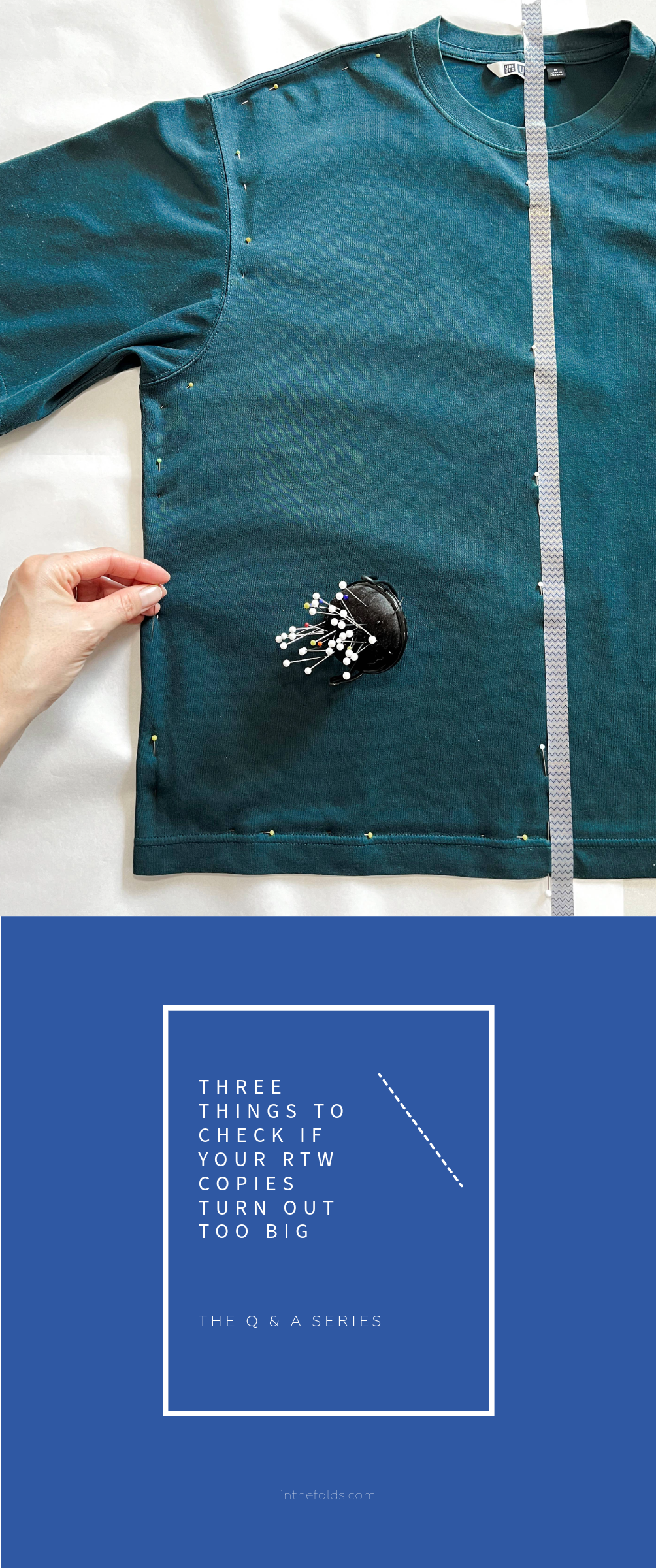THE Q & A SERIES
HOW TO DRAFT A SKIRT LINING FOR THE ACTON DRESS
Hi Emily,
If one would want to add a lining to the skirt, how should the pocket construction go? (in reference to the Acton dress).
Giulia
Hi Giulia,
We thought this would be a great question to answer this week as we just released the first instalment of our two-part Sewing Linings Series. I’ll give you a few pointers on how to draft the lining pattern for the Acton dress, but if you want more help with drafting and sewing linings, I recommend you join our Curated by ITF subscription!
When it comes to pockets, you actually don’t need to worry about them in relation to the lining. The pocket will be sandwiched between the outer fabric and the lining.
Construct the dress and pockets as usual and then attach the lining, making sure you don’t attach the lining to the skirt.
One thing that you may do differently is leave the seams raw. When it comes to the linings, if your fabric doesn’t fray too much then you can leave the seams unfinished too.
The Acton dress design includes a number of panels in the skirt. To draft a lining, we begin by removing the panel lines from the pattern.
5 reasons to remove panel lines from a lining pattern
Removing panel lines reduces the number of pieces you need to sew together, simplifying the
construction process and the time it takes to assemble the lining. Fewer seams also means less chance of errors or misalignment during construction.
Eliminates unnecessary seams, reducing bulk and potential discomfort. Seam allowances add bulk, and fewer seams mean a smoother, more comfortable lining against the skin.
Every seam is a potential weak point that can experience stress and wear over time. By reducing the number of seams, you minimise the areas where the lining could potentially tear or fray.
A lining with fewer seams allows the outer fabric to drape more naturally and smoothly, without the interruption of seam lines.
Fewer seams create a cleaner, more polished look inside the garment. This is particularly important for high-end or tailored pieces where attention to detail is crucial.
WHY IS THE LINING ON SKIRTS LEFT UNATTACHED TO THE OUTER SKIRT?
There are several very good reasons why the skirt linings are usually left unattached to the hem of outer skirt:
Independent movement - Leaving the lining to hang freely allows it to move independently of the outer skirt. This prevents restriction and ensures that both layers can flow naturally, enhancing comfort and ease of movement.
Avoiding constriction - If the lining were attached to the hem, it could constrict the outer fabric, causing awkward bunching, pulling, or riding up as you move.
Smooth silhouette - Attaching the lining to the outer hem can create bulk at the bottom of the skirt, disrupting the smooth silhouette and clean lines of the garment. An unattached lining maintains a sleek appearance.
Facilitates alterations - If alterations are needed, having an unattached lining makes it easier to adjust either the outer skirt or the lining independently without affecting the other layer.
Enhanced breathability - An unattached lining can enhance breathability, as it allows for better air circulation between the layers, contributing to overall comfort.
HOW TO DRAFT A SKIRT LINING FOR THE ACTON DRESS
Step 1
To get started, trace a copy of your skirt pattern and remove any panel lines or unnecessary design details. If the panel lines provide shaping, transform the panel line into a dart or tuck. Be sure to transfer any notches from the pattern onto the lining pattern.
Step 2
Alter the length for the lining. A skirt lining is typically left unattached (not joined to the hem) from the outer skirt hem. This means that the lining pattern needs to be shorter than the outer skirt so that the lining cannot be seen when the skirt is worn.
We recommend shortening the length by 2.5cm (1in). The length should be taken from the hem (not from within the pattern piece as you do when removing length for variation in height between your measurements and the pattern).
Step 3
Add seam allowance to the pattern.
Step 4
Finalise the pattern by adding a grainline and cutting instructions. It's also a good idea to label the CENTRE FRONT and CENTRE BACK.
Industry tip! Cutting instructions on lining patterns are written in green pen / marker so that lining pieces can be quickly and easily identified.
Happy sewing,
Emily
RESOURCES MENTIONED IN THIS ISSUE
The Acton dress pattern can be found here.
The Acton dress sew-along can be found here.
More information about our Curated by ITF subscription can be found here. Sign up during the month of September to get part one of our Sewing Linings Series, the Drafting Linings Skills Kit, delivered straight to your inbox.
For more issues of the Q & A series, you can check out the archive here.
WHAT YOU’VE BEEN MAKING
Sawtell dress made by @sarahissewcrafty
Collins top made by @megmadesewing












